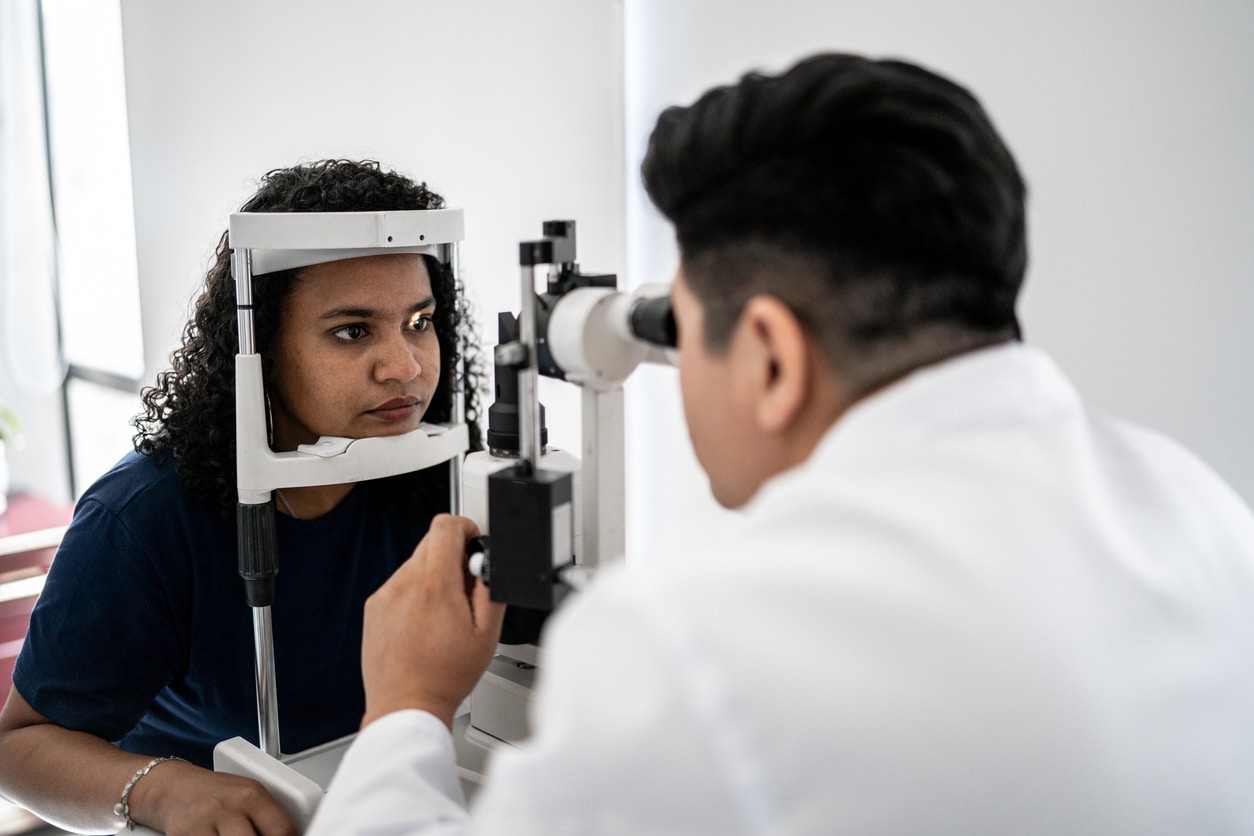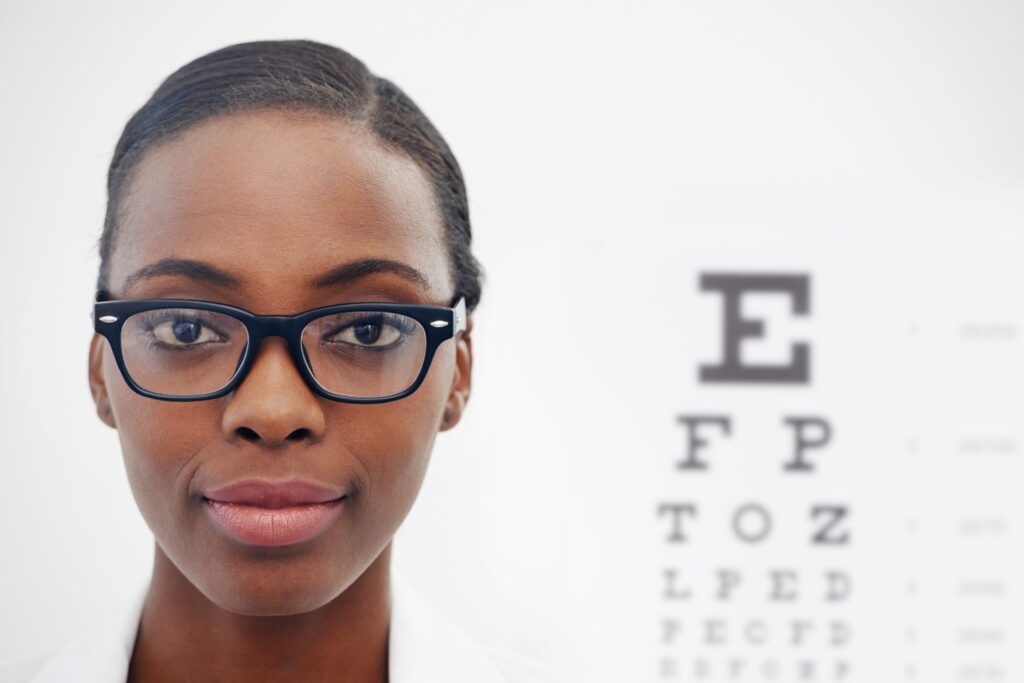The Comprehensive Eye Exam: What to Expect During Your Visit to the Eye Physician
A browse through to the eye medical professional for an extensive eye test is even more than a regular exam; it is a crucial action in protecting your visual health and wellness. From the preliminary discussion of your medical history to the precision of the aesthetic acuity test, each part of the test offers a details purpose. What exactly happens throughout the eye wellness analysis, and exactly how does it influence the prescription process? Understanding these elements is important for those who wish to keep ideal vision. As we explore each part, the relevance of follow-up suggestions will also come to be clear.
First Consultation
The preliminary examination during an eye exam works as a critical structure for understanding an individual's visual wellness requirements. This phase sets the tone for the entire assessment process, enabling the optometrist to gather essential details about the person's medical history, lifestyle, and certain vision concerns. By thoroughly evaluating any kind of pre-existing conditions, medicines, or previous surgical treatments, the eye treatment professional can tailor the exam to address private requirements successfully.

Additionally, the preliminary examination is a chance for people to articulate any kind of questions or concerns, promoting a collective partnership with their doctor. This communication not only makes sure that the client feels informed and comfortable yet also encourages them to get involved actively in their eye health management. Jointly, these conversations allow the optometrist to design a personalized exam strategy, guaranteeing optimal care and specific diagnosis.
Visual Skill Test
Beginning the core components of an eye exam, the visual skill test is designed to examine the sharpness and quality of an individual's vision. This crucial evaluation aids identify just how well a person can determine letters or icons at a standardized range, generally making use of a Snellen chart (Opticore Optometry). The chart consists of rows of letters that lower in size from leading to base, with the patient positioned at a popular range of 20 feet
During the test, the individual is asked to cover one eye and review aloud the smallest line of letters they can see plainly. This process is repeated for the various other eye. The results are taped as a fraction, with 20/20 vision showing normal aesthetic skill-- where the patient can see at 20 feet what an individual with typical vision can see at that range.
The aesthetic acuity examination additionally determines prospective refractive errors such as hyperopia, nearsightedness, or astigmatism, which could demand corrective lenses. By establishing a baseline of visual efficiency, the examination is a crucial analysis device that assists the eye treatment specialist in creating an appropriate therapy strategy customized to the individual's one-of-a-kind aesthetic requirements.
Eye Health And Wellness Evaluation
Complying with the visual acuity test, a comprehensive eye health assessment is performed to make certain the total health click for source of the eyes. This critical section of the eye examination includes an extensive evaluation of both the internal and exterior frameworks of the eye. The ophthalmologist or optometrist starts by analyzing the eyelids, cornea, conjunctiva, and sclera for any type of indicators of infection, swelling, or problems. Utilizing specific devices like a slit lamp, the practitioner obtains an amplified view of the eye's makeup, making it possible for in-depth assessment.
Next, focus shifts to the interior frameworks. With using ophthalmoscopy or fundus digital photography, the retina, optic nerve, and blood vessels are diligently assessed. This action is important for recognizing conditions such as retinal detachment, glaucoma, or diabetic person retinopathy. In a lot of cases, student dilation is done to enhance exposure of the inner eye structures, although this might cause short-term light level of sensitivity for the person.
In addition, intraocular stress is measured to screen for glaucoma danger. This is typically done utilizing tonometry, which can identify raised pressure degrees that could suggest prospective damage to the optic nerve. Collectively, these evaluations create a thorough evaluation to maintain eye wellness.
Refraction and Prescription
Refraction is an innovative procedure performed by eye care specialists to identify the specific lens power required to remedy refractive mistakes such as myopia, astigmatism, hyperopia, and presbyopia. The objective of this treatment is to assess just how light bends as it passes with the eye, allowing the practitioner to establish whether restorative lenses are required for improved visual skill.
During the refraction procedure, the individual is asked to browse a phoropter, a tool which contains various lenses. The expert will methodically change these lenses and ask the individual to compare clarity in between options till the most effective possible vision is accomplished. This treatment is essential in crafting a precise prescription that specifies the appropriate lens power for spectacles or get in touch with lenses.
The prescription stemmed from this treatment not only optimizes vision but additionally acts as a structure for selecting ideal restorative glasses. It is crucial to make sure that prescriptions are regularly upgraded, as modifications in vision can take place in time, emphasizing the relevance of routine eye examinations. This careful interest to detail aids preserve clear, comfy vision in day-to-day life.
Follow-Up Recommendations

Throughout a follow-up visit, the eye doctor will conduct a collection of tests to assess visual skill and look for any type of modifications in vision that might demand an upgrade to the prescription. Furthermore, the follow-up offers an opportunity get more to review any kind of discomfort news or issues experienced with current eyewear. Changes can be made to make certain convenience and efficacy, whether via lens alteration or framework adjustments.
For patients with continuous conditions such as glaucoma, diabetes-related eye issues, or macular deterioration, more frequent follow-ups may be necessary. These consultations are critical for handling and potentially reducing the progression of eye condition. Sticking to these suggestions can dramatically add to maintaining aesthetic wellness and preventing lasting problems.
Verdict
The detailed eye test is an important procedure for keeping aesthetic health, including a thorough assessment of medical history and vision problems. Key components include the visual acuity examination, which evaluates eyesight clarity, and the eye wellness assessment, which analyzes the general problem of the eyes.
A check out to the eye medical professional for a detailed eye test is even more than a regular examination; it is an essential action in safeguarding your aesthetic wellness.Kicking off the core elements of an eye exam, the aesthetic acuity test is developed to analyze the intensity and quality of an individual's vision.Complying with the visual acuity examination, a thorough eye wellness analysis is carried out to guarantee the general well-being of the eyes. These check outs enable the eye care professional to check adjustments in vision, upgrade prescriptions, and evaluate the general health of the eyes. Key parts consist of the visual skill examination, which examines eyesight quality, and the eye health and wellness assessment, which checks out the general condition of the eyes.